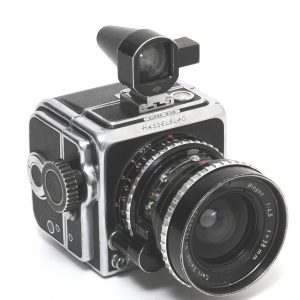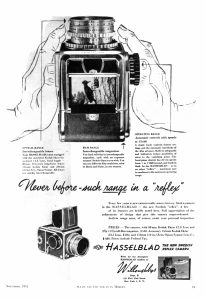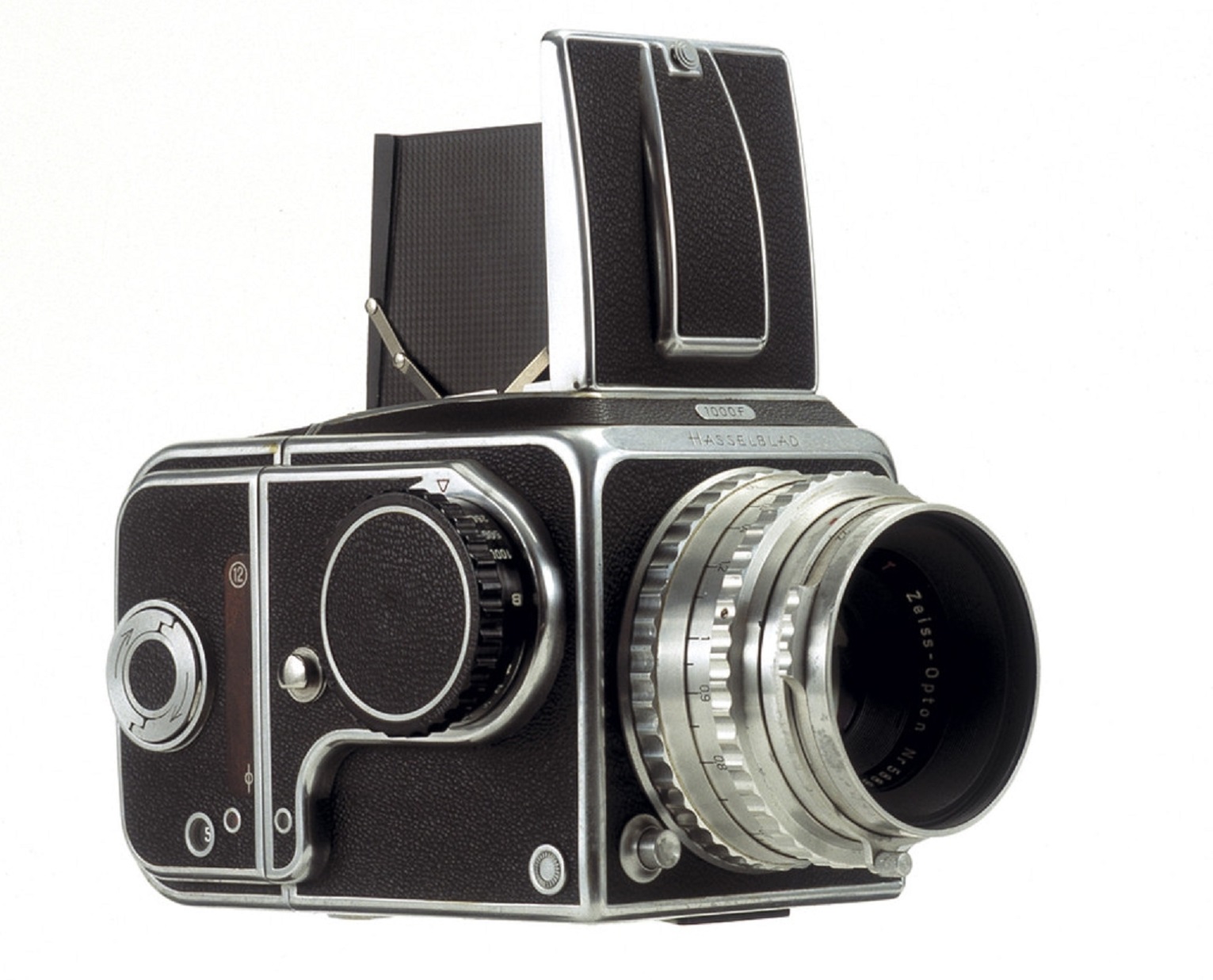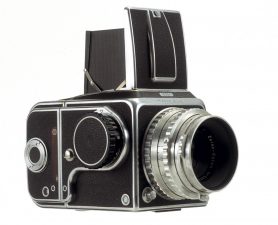The first consumer camera made by Hasselblad was the 1600 F that first went on sale in 1948. Due to the high price and some significant growing pains of the design, especially in the shutter, not many were sold. It would not be until the release of the 1000 F in 1953 that Hasselblad would make a camera with the reliability and performance that professional photographers expected.
They only had one problem, very few people outside of Sweden knew who Hasselblad was, and due to their high price they weren’t on the radar of most Western photographers. That all changed in December 1954 when Modern Photography ran an 8 page article on two of Hasselblad’s current models. The first was the Hasselblad 1000 F, which was their primary 6×6 medium format SLR, but the other was a unique model called the Superwide which had a unique body built around a Carl Zeiss Biogon 38mm f/4.5 lens and a Compur leaf shutter.

Although they don’t come out and say it, while reading this article I got the impression that the editors at Modern had their doubts about the quality of this new Swedish camera. By 1954, word of this all new camera system had undoubtedly reached American shores, but with the majority of new camera releases at the time coming from Japan and Germany, it’s easy to understand how a Swedish camera might get dismissed.

In an effort to ascertain how good of a camera the Hasselblad really was, the staff at Modern Photography subjected both cameras to some rather unusual and brutal tests. The camera was used constantly, shooting over 500 rolls of film through them and they weren’t treated nicely. The cameras were handled roughly, without the protection of a case, and even intentionally dropped on the floor a couple of times to see what would happen. When the cameras were not in use, staff members would wind the shutter and fire it without film loaded, hundreds of times for months.
This level of unusual abuse would have pushed even the best Japanese and German cameras to their limits, but despite their best efforts, the Hasselblad cameras came through unscathed.
Praise went beyond the reliability, through a series of bench tests of 4 lenses on the 1000 F plus the 38mm Biogon on the Superwide, the article goes on to say:
No group of lenses tested by MODERN ever proved more uniformly excellent, at all apertures, than the Hasselblad’s, from the 38mm Biogon to the 250mm Sonnar.

The flexibility of the system was lauded as well, from the convenience of the interchangeable magazine backs, the foolproof methods that were designed into the camera to keep film light tight in the magazine without wasting an exposure, and of the excellent brightness of the Kodak Ektalite field lens. Praise was given to some of the camera’s accessories as well such as the magnifying hood which was very effective at keeping out stray light and a lens mount adapter which allowed you to mount lenses from other systems used on the camera.
This level of praise for what at the time was a little known “exotic” most certainly improved Hasselblad’s reputation outside of Sweden and Europe. While I don’t have the benefit of sales numbers, I have to believe that after this article, excitement at Hasselblad’s American distributor, Willoughby’s would have increased.
We now know today that Hasselblad would continue to have tremendous success all over the world (and even out of this world), but would that have been different had it not been for this article? Who knows!
All scans used with permission by Marc Bergman, 2020.



The Superwide, to this day, gives me a severe case of GAS … !